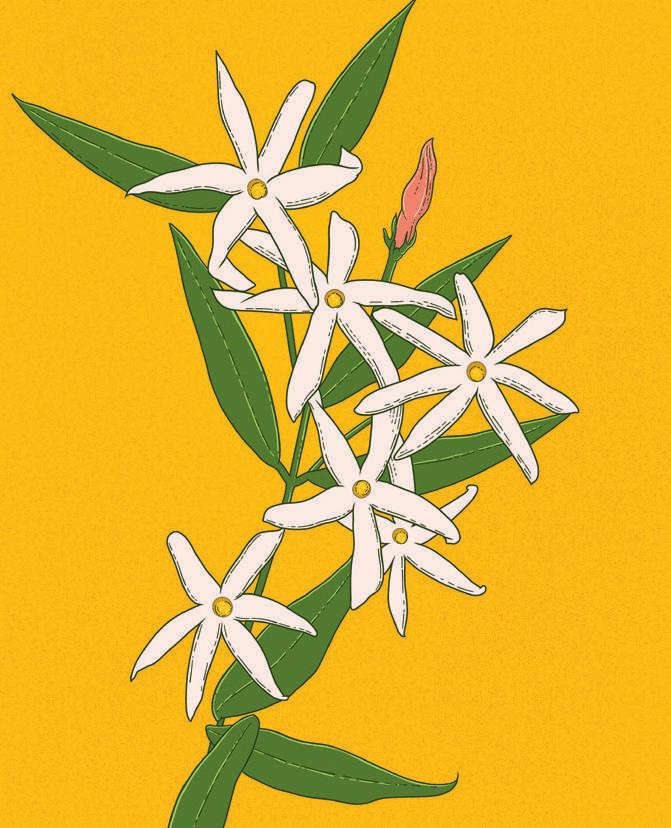
1 minute read
Scrub Cherry
~ Syzygium australe ~
MYRTACEAE
Advertisement
Most of us have heard of Lilly Pillies – maybe we have sampled their jams or grew up with them in our backyard or neighbourhood. They exist under the Syzygium genus, with some species having edible fruit similar in shape and consistency to cherries. They range from this here Scrub Cherry to the classic Lilly Pilly (S. smithii), the Sour Cherry (S. corynanthum), the Bush Apple (S. suborbiculare) and the Powderpuff Lilly Pilly (S. wilsonii). I wish I could illustrate them all in this book as they’re worth highlighting for their edibility, gorgeous blooms and backyard companionship. For those with a penchant for fine home-made beverages, the Scrub Cherry has wine-making potential similar to the red grape.
WHERE TO LOOK
The Scrub Cherry will be found perched by watercourses and around rainforest environments throughout the tropical and subtropical zones of Queensland and down to Sydney.
Locations → Queensland: Carnarvon National Park, Flinders Peak Conservation Park, D’Aguilar National Park and Brisbane Botanical Gardens Mount Coot-tha; NSW: Bouddi National Park.
FEATURES
This shrubby tree can grow up to 24m but generally sits around the 2–5m mark. Its fruit is a showstopper with mature plants sprouting a magenta coat of palatable droopy fruit 1–2.3cm in size. Its glossy green leaves are 4–8cm long with a pinkish hue when young. Like most leaves in the Myrtle family, they also contain oil spots. The single seed is contained within the fruit and is easily removed for replanting while snacking on the pulp. The Syzygium australe species can be distinguished from its genus doppelgangers by its lighter-coloured trunk.
FLOWERING SEASON
Summer and autumn → Flowering occurs throughout summer and autumn, followed by fruit.
PLANTING
Easily propagated by cutting or seed, the Scrub Cherry is also found in specialty nurseries and online. You can sow the fruit’s seed directly by removing the pulp and covering it with around 1cm of soil. Increase fruiting by feeding a seaweed or plant-based fertiliser every six months. It enjoys full sun or part shade in well-draining soil with a weekly watering. Watch out for some cultivars that may not produce much or any fruit.










